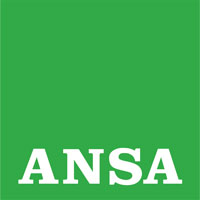Exhibitors 2023
- ART
- ARTISANS & NEW CRAFT
- FASHION & WEARABLES
- RECYCLING & UPCYCLING
- STEAM PUNK
- CIRCULAR ECONOMY
- PRODUCT DESIGN
- STARTUP
- BIOLOGY
- EDUCATION
- MUSIC & SOUND
- SCIENCE
- GAMES
- HACKS
- INTERNET OF THINGS
- OPEN SOURCE
- HOME AUTOMATION
- FABRICATION
- NEW MANUFACTURING
- ROBOTICS
- INDUSTRIAL AUTOMATION
- 3D PRINTING
- ENERGY & SUSTAINABILITY
- YOUNG MAKERS (< 18)
- WELLNESS & HEALTHCARE
- AEROSPACE
- FOOD & AGRICULTURE
- 3D SCANNING
- ARTIFICIAL INTELLIGENCE
- DRONES
- KIDS & EDUCATION
- CULTURAL HERITAGE
- RETROCOMPUTING
- VIRTUAL REALITY
- CYBERSECURITY
USE OF AI FOR THE MAPPING OF AGRI-ENVIRONMENTAL XENBIOTIC CONTAMINATION USING TERRITORIAL MICRO-SAMPLING CARRIED OUT BY BEES
Bees play a fundamental role in ecosystems and are present throughout the territory (at our latitude).
The bee carries out its collection and pollination activity in a radius ranging between 2 and 10 km, and is attracted only by plants and clean water, avoiding contact with any waste and/or waste material.
Every day, on average, a worker bee visits up to 7,000 flowers, fulfilling its very important role for the ecosystem.
Any xenobiotic contamination present in the materials collected by bees and derived products are representative of the contamination of the flora and surface waters of the area where the hive is located.
Fosan is starting the creation of a mapping of sentinel hives located throughout the country, in order to monitor the conditions of environmental risk from xenobiotic contamination.
The analytical data referring to the samples taken in the various "sentinel hives" are processed with AI techniques to identify level curves of xenobiotic contamination and related hotspots, and the presumed connections with human activities. With AI, the presumed correlations between the recorded anthropic activities and the levels of contamination of the hive products are identified.




















































































